In order to implement the requirements of the CPC Central Committee that "the epidemic situation should be prevented, the economy should be stabilized and the development should be safe" and the relevant policies and measures of the State Council and Beijing to stabilize the economy, effectively coordinate the epidemic prevention and control and economic and social development, coordinate the development and safety, stabilize the growth and stabilize the market players to ensure employment, ensure the economic operation in a reasonable range, adhere to the "five-child" linkage service and integrate into the new development pattern, and promote the high-quality development of "one district, one city" new Fangshan.
First, fully stabilize the economic fundamentals
(A) tax relief "direct enjoyment"
1. Strictly implement the national VAT credit and tax refund policy, take the initiative to serve, accurately push information "one-on-one", and handle the whole process online to ensure that the qualified enterprise stock credit tax should be refunded before June 30, 2022; Strictly implement the relevant national tax reduction and exemption policies. (Responsible units: District Taxation Bureau, Yanshan Taxation Bureau, District Finance Bureau, Yanshan Finance Bureau)
Policy interpretation department:
Goods and Services Tax Section of District Taxation Bureau: 81389617
Income Accounting Section of Yanshan Taxation Bureau: 81335685
(B) social insurance premiums and housing provident fund "should be slowed down."
2. Strictly implement the municipal policy on holdover of social insurance premiums, so that publicity and implementation are in place. For catering, retail, tourism, civil aviation, highway and railway transportation enterprises, enterprises with difficulties in production and operation in 17 industries whose industrial chain and supply chain are greatly affected by the epidemic, all small and medium-sized enterprises with difficulties in production and operation, and individual industrial and commercial households who participate in the insurance in the form of units, the policies of deferred payment of old-age insurance, unemployment insurance and work-related injury insurance premiums can be implemented, and the units that can apply for deferred payment of three social insurance premiums can be paid, and the insured units that meet the requirements for deferred payment can log in to the city within the specified time. For the part that should be paid by individual employees, the insured unit should fulfill the obligation of withholding and paying in full and on time every month. Simplify the handling procedures by means of voluntary application and written commitment. The holdover period is until the end of 2022, and the late payment fee is exempted during the holdover period. Continue to implement the 1% unemployment insurance rate policy until April 30, 2023. (Responsible unit: District Human Resources and Social Security Bureau)
Policy interpretation department:
District Human Resources and Social Security Bureau Social Security Center Registration Collection Section: 89367051
3. Enterprises and other employers affected by the epidemic can apply for holdover of housing provident fund according to regulations, and the holdover period is from April to December, 2022. During the holdover period, the paid workers will normally withdraw and apply for housing provident fund loans, which will not be affected by holdover. Workers who rent commercial housing without their own houses in this area can withdraw housing provident fund according to the actual rent paid, and are not limited by the monthly deposit amount of the depositor. If the personal housing provident fund loan cannot be repaid normally due to the epidemic situation, it will not be overdue, and the credit record will not be affected, and the penalty interest will be exempted. (Responsible unit: District Housing Provident Fund Management Center)
Policy interpretation department:
Comprehensive Office of District Housing Provident Fund Management Center: 60345399
(C) State-owned rent relief "should enjoy"
4. Formulate the Operational Guidelines on Reducing the Rent of State-owned Houses for Small and Micro Enterprises and Individual Industrial and Commercial Houses in Service Industry in 2022 by organs and institutions at all levels in Fangshan District, and the Operational Guidelines on Reducing the Rent of State-owned Houses for Small and Micro Enterprises and Individual Industrial and Commercial Houses in Service Industry in 2022 by the State-owned Assets Supervision and Administration Commission of Fangshan District. In 2022, the state-owned houses of administrative institutions and state-owned enterprises in the leased area will be reduced or exempted for six months. Among them, if the lessee’s actual lease term is less than one year in 2022, it will enjoy reduction and exemption according to the actual lease term (actual lease days/365 days). If the lease contract involves special circumstances such as rent-free period, it shall be agreed by both parties through consultation. Eligible supermarket chains, convenience stores and catering enterprises shall be implemented in stores. (Responsible unit: District SASAC, District Finance Bureau)
Policy interpretation department:
Property right management section of district SASAC: 81312573
Assets Section of District Finance Bureau: 69377980
5. If the science and technology incubator renting non-state-owned houses reduces or waives the rent for small and medium-sized enterprises and individual industrial and commercial households, it is confirmed that subsidies will be given according to 50% of the total rent reduction and exemption, of which 20% will be borne by the municipal level and 30% by the district level. (Responsible units: District Economic and Information Bureau, District Science and Technology Commission, District Finance Bureau)
Policy interpretation department:
District Economic and Information Bureau Industrial Development Section: 81312975
6. Encourage non-state-owned housing owners or business management entities to reduce the rent of small and medium-sized enterprises and individual industrial and commercial households, and the government will give some support. (Responsible units: District Bureau of Commerce, District Bureau of Economy and Information Technology, District Finance Bureau, and other industry departments)
Policy interpretation department:
Business field: Planning and Development Section of District Bureau of Commerce: 81312708
Industry and Information Technology: Small and Medium-sized Enterprises Section of District Economic and Information Bureau: 81312669
Agriculture: Financial Audit Section of District Agriculture and Rural Bureau: 89353907
Culture and Tourism: Industry Section of District Cultural Tourism Bureau: 89368262
Fiscal Policy: Enterprise Section of District Finance Bureau: 69377943
7. Actively implement the municipal "rent pass" policy, do a good job in policy interpretation, and organize enterprises to declare. Encourage small and micro start-up cultural enterprises to settle in the municipal cultural industrial park for incubation and development, and give no more than 30% office rent subsidy, and small and micro start-up cultural enterprises outside the park give no more than 20% office rent subsidy. The subsidy period for a single cultural enterprise is no more than 6 months, and the amount of rent subsidy is calculated according to the actual rent paid by the reporting enterprise, and the subsidy area is no more than 500 square meters. (Responsible unit: Propaganda Department of District Committee)
Policy interpretation department:
District gathering office industrial development department: 89357197
8. Led by the District State-owned Assets Supervision and Administration Commission, jointly with the District Finance Bureau and other departments, set up a special class for rent reduction and exemption, announce contact information, coordinate the implementation of supervision policies, and ensure that rent-free measures benefit the final tenant operators. (Responsible units: District State-owned Assets Supervision and Administration Commission, District Science and Technology Commission, Zhongguancun Fangshan Garden Management Committee, District Commerce Bureau, District Finance Bureau, District Economic and Information Technology Bureau)
(D) Water and electricity "arrears for non-stop"
9. For small and micro enterprises and individual industrial and commercial households that fail to pay in time due to the epidemic, the overdue payment period will be until the end of 2022, and the late payment fee will be exempted during the deferred payment period. Reduce the average broadband and private line tariffs of small and medium-sized enterprises by another 10%. (Responsible units: District Urban Management Committee, District Water Affairs Bureau, District Market Supervision Bureau, District Economic and Information Technology Bureau)
Policy interpretation department:
Gas policy: Gas Office of District Urban Management Committee: 89351493
Electricity consumption policy: Electric Coal Center of District Urban Management Committee: 89352497
Water Policy: Water Supply and Drainage Department of District Water Affairs Bureau: 80365932
(E) Run a "financing through train"
10. Do a good job in financing relief, guide financial institutions within their jurisdiction to implement the policy of universal small and micro loans, expand the coverage of the first loan discount policy, and ensure that the growth rate of universal small and micro loans is higher than that of various loans. Make full use of Fangshan District’s comprehensive financial service platform for small and medium-sized enterprises, timely meet the financing loan needs of small and medium-sized enterprises, and establish a normalized government-bank-enterprise docking mechanism. (Responsible unit: District Financial Services Office, District Bureau of Economy and Information Technology)
Policy interpretation department:
District Financial Services Office Financial Institutions Service Section: 69379310
11. Encourage financial institutions within the jurisdiction to postpone the repayment of principal and interest for small and medium-sized enterprises, individual industrial and commercial households, truck drivers’ loans and personal housing and consumer loans affected by the epidemic in accordance with the municipal policy requirements, simplify the application procedures, support online processing, not downgrade the loan risk classification due to the epidemic factors, not affect the credit record, and waive the penalty interest. (Responsible unit: District Financial Services Office)
Policy interpretation department:
District Financial Services Office Financial Institutions Service Section: 69379310
12. Increase the support of financing guarantee for small and medium-sized enterprises. If the newly applied bank loans for small and medium-sized enterprises in the service industry that are greatly affected by the epidemic are guaranteed by government financing guarantee institutions in 2022, the guarantee fee will be charged at the rate of 0.5% required by the municipal level, and the guarantee fee for policy-based entrepreneurial guarantee projects will be exempted. The government financing guarantee institutions will provide compensation not higher than 20% of the total compensation actually incurred. (Responsible units: District Finance Bureau, District Financial Services Office, District Economic and Information Technology Bureau)
Policy interpretation department:
District Financial Services Office Financial Institutions Service Section: 69379310
13 to encourage insurance institutions to set up enterprise epidemic insurance, and give a certain amount of compensation for the insured enterprises that stop production or business due to sudden epidemic. Vigorously promote inclusive commercial health insurance to provide supplementary protection for basic medical insurance. Accelerate the landing of new business insurance pilot products such as platform economy and sharing economy. (Responsible units: District Financial Services Office, District Medical Insurance Bureau, District Economic and Information Technology Bureau, District Human Resources and Social Security Bureau)
(6) Optimizing the business environment
14. Introduce some measures to help enterprises out and optimize the business environment, expand the application of online examination and approval services, electronic seals and electronic licenses, improve the service level of "one network to run", and realize the "initiative", "speed up" and "convenience" of the policy of benefiting enterprises. If the production license of industrial products expires during the epidemic period, the validity period will be automatically extended after the online commitment of the enterprise. If the food production license (non-special food) expires, the validity period will be extended by 6 months. If the food production license (special food) and food business license cannot be renewed in time in the closed control area, the validity period will be extended to 30 days after the closure control is lifted. Acts of dishonesty caused by the epidemic, such as administrative punishment and deferred repayment of loans, are not included in credit records and credit records, and convenient services for enterprises that have been subjected to administrative punishment and publicized are opened. In view of the enterprise demands in the 12345 enterprise service hotline, we will carry out the whole chain service of accepting and handling, supervising feedback and paying a return visit to evaluate, so as to realize "the enterprise has a call and the government has a response". (Responsible units: District Development and Reform Commission, District Government Affairs Service Bureau, District Economic and Information Bureau, District Market Supervision Bureau, District Urban Management Command Center)
Policy interpretation department:
License extension policy: Administrative Examination and Approval Section of District Market Supervision Bureau: 13381269729
Exemption policy for dishonesty: Market Supervision and Management Section 1 of District Market Supervision Bureau;
13691321917
District Economic and Information Bureau Information Management Section: 89358881
15. Consolidate the five-level "service package" work system of district leaders, general butlers, industry butlers, service butlers and responsible departments, improve the visiting service system, formulate and start the work plan for district, street and township leaders to contact enterprises, actively play the role of industry and territorial butlers, improve the dynamic solution mechanism of enterprise demands, and continuously improve the ability of governments at all levels to coordinate the development of enterprises. Guide enterprises to lay out a number of major projects that meet the functional orientation of our region. (Responsible unit: District Development and Reform Commission, various industry departments, towns and villages)
16. Carry out the special action of clearing the debts of small and medium-sized enterprises. If there is no disagreement and the debts are found to be paid together, the repayment plan will be clarified before June 30, 2022, and it is strictly forbidden for government investment projects to be in arrears. (Responsible units: District Economic and Information Technology Bureau, District Finance Bureau, District State-owned Assets Supervision and Administration Commission, District Development and Reform Commission, District Market Supervision Bureau and District Urban Management Committee)
17. Accelerate the progress of fiscal expenditure, reduce general expenditures such as meetings, training and travel, and fully recover all kinds of surplus carry-over funds in accordance with regulations, and make overall plans for areas in urgent need such as epidemic prevention and control, and helping enterprises to bail out. (Responsible unit: District Finance Bureau, district departments)
18. Increase the inclination of public procurement, and expand the consortium bidding and reasonable subcontracting for government procurement projects to lower the participation threshold of small and medium-sized enterprises. Increase the price deduction ratio of government procurement of goods and services for small and micro enterprises to 10%-20%. For goods and services procurement projects with more than 2 million yuan and engineering procurement projects with more than 4 million yuan, more than 40% of the total budget is reserved for small and medium-sized enterprises, and the proportion reserved for small and micro enterprises is not less than 70%. Trade union funds and other public funds shall be implemented with reference. (Responsible units: District Finance Bureau, District Economic and Information Bureau, District Housing and Urban-Rural Construction Committee, District Development and Reform Commission, District Federation of Trade Unions)
Policy interpretation department:
District Finance Bureau Procurement Office: 69377919
(7) Consolidate the policy foundation.
19 support the stable operation of key enterprises such as industry and software information service industry. For enterprises in the industrial and software information service industry that have achieved the "small upgrade" for the first time in 2022, a one-time reward of 200,000 yuan will be given. (Responsible unit: District Economic and Information Technology Bureau, District Finance Bureau)
Policy interpretation department:
Economic Operation Section of District Economic and Information Bureau: 81312900
Second, make every effort to ensure the safety and stability of the industrial chain supply chain
(1) Effectively coordinating epidemic prevention and control, production and operation.
20. Actively, steadily and orderly promote the resumption of work and production, adhere to the general policy of "dynamic clearing", and implement social prevention and control measures at different levels. Update and dynamically adjust the epidemic prevention and control guidelines according to different scenarios, and timely solve the practical difficulties caused by the epidemic prevention and control of enterprises that have resumed work, supporting enterprises to resume work, logistics and transportation, and returning to Beijing. Reduce the influence of nucleic acid detection on the production and operation of enterprises by means of door-to-door nucleic acid detection. Guide more enterprises to formulate closed-loop production plans, optimize production processes with minimum production units, minimum personnel grouping, and staggered shifts to improve the ability of enterprises to resist the impact of the epidemic. The living quarters and construction areas of major projects will be managed separately, and new employees in Beijing will live in independent areas to ensure that the construction progress will not be delayed and the quality will not be discounted. (Responsible unit: district departments)
21. Improve the "white list" system of key enterprises with hierarchical classification and dynamic management, strive for more key enterprises and upstream and downstream enterprises to be included in the "white list" protection scope of the national and Beijing industrial chain supply chain, cooperate with municipal departments to establish a "white list pool" of enterprises with mutual recognition, interoperability, mutual supply and mutual insurance in Beijing, Tianjin and Hebei, and make overall plans to promote more qualified enterprises to be included in the white list scope. Establish a "white list" of important functional enterprises, epidemic prevention materials production enterprises, urban operation guarantee enterprises, industrial chain leaders and supply chain front-end enterprises. (Responsible unit: various industry departments)
(2) Effectively guarantee smooth logistics.
22. Strictly implement the "white list" system for drivers and passengers of freight vehicles and the closed-loop management mode of "taking, leaving and chasing", and accurately assign codes to the green belt * number of communication travel cards. Actively strive for the municipal government’s fixed assets investment and local government’s special bond support, and give support to public and basic logistics infrastructure short-board projects and cold chain logistics facilities construction projects. (Responsible units: District Transportation Bureau, Fangshan Branch of Municipal Public Security Bureau, District Health and Wellness Committee, District Finance Bureau, District Development and Reform Commission, District Commerce Bureau, District Housing and Urban-Rural Construction Committee, District Economic and Information Technology Bureau)
Policy interpretation department:
District Transportation Bureau Cargo Transportation Management Section: 60342096
(3) Accelerate the layout of industrial chains in key areas of Beijing-Tianjin-Hebei cooperation.
23. Carry out the action of strengthening the chain of high-tech industries, and provide a package of support for leading enterprises to improve the supply and demand capacity of the industrial chain in Beijing, Tianjin and Hebei around key areas. Make full use of industrial guidance funds and other means to promote a number of high-tech industrial projects such as high-end manufacturing, new materials and medical health to land in our region. Actively strive for the construction of the Beijing-Tianjin-Hebei National Technology Innovation Center, and promote in-depth cooperation between the three places in industrial common technology research and development and application of results. (Responsible departments: District Economic and Information Technology Bureau, District Science and Technology Commission, Zhongguancun Fangshan Garden Management Committee, District Development and Reform Commission, District Finance Bureau)
Third, fully promote the development of market players in key areas
(A) to promote the healthy and sustainable development of platform enterprises.
24. Promote the standardized, healthy and sustainable development of platform enterprises, and carry out the declaration of 2022 SME public service demonstration platform and small and micro enterprise entrepreneurship innovation demonstration base according to the management measures of municipal departments. Accelerate Alibaba’s future science and technology industry base project, aerospace Huashi intelligent equipment Internet of Things R&D operation center and intelligent manufacturing demonstration base project. (Responsible unit: District Bureau of Economy and Information Technology)
25. Support platform enterprises to participate in the construction of smart cities and land a number of smart transportation, smart business districts, smart blocks and smart home application scenarios. Guide the scientific and technological transformation of key platform enterprises, support enterprises to cooperate with national laboratories, state key laboratories, new research and development institutions and universities, accelerate technological research and development breakthroughs in artificial intelligence, cloud computing, blockchain, operating systems and processors, and support platform enterprises to participate in the construction of new computing systems. Support platform enterprises to promote digital retail, social e-commerce, online fitness, online diagnosis and treatment, cloud tourism, cloud exhibition, cloud performance and other new digital economic models, expand the "internet plus" consumption scene, and accelerate the integrated development of home life and home office. (Responsible units: District Economic and Information Bureau, District Development and Reform Commission, District Science and Technology Commission, Liangxiang University Town Management Committee, Zhongguancun Fangshan Garden Management Committee, District Commerce Bureau, District Health and Wellness Committee, District Culture and Tourism Bureau)
(B) Support the development of innovative enterprises
26. Increase financing support for innovative enterprises, actively explore diversified financial service models, organize special docking activities for science and technology enterprises with direct financing needs in the region, and guide private equity funds and venture capital institutions to increase financing support for science and technology enterprises. Increase support in research and development innovation, scenario application, financing and listing. (Responsible units: District Financial Services Office, District Economic and Information Bureau, District Science and Technology Commission, Zhongguancun Fangshan Garden Management Committee, and District State-owned Assets Supervision and Administration Commission)
Policy interpretation department:
District Financial Services Office Financial Institutions Service Section: 69379310
District Economic and Information Bureau Small and Medium Enterprises Section: 81312669
27. Implement application policies such as "the first set", "the first batch" and "the first stream", and increase support for enterprise technology research and development investment, achievement transformation and concept verification. (Responsible units: District Science and Technology Commission, District Economic and Information Bureau, District Development and Reform Commission, District Finance Bureau)
28. Support the landing of a number of intelligent and green digital technological transformation projects, give grading support of no more than 30% of the total investment to qualified "Xinzhizhao100" projects and green and low-carbon projects, and give rewards of no more than 20% of the contract value to "specialized and innovative" digital empowerment projects for small and medium-sized enterprises. (Responsible unit: District Economic and Information Technology Bureau, District Finance Bureau)
Policy interpretation department:
District Economic and Information Bureau Small and Medium Enterprises Section: 81312669
(C) "two areas" to promote the development of foreign-funded foreign trade enterprises
29. We will further promote the opening of the whole industrial chain and the reform of all links in key areas of the "two districts" and strengthen the protection of land, water and energy for foreign-funded projects. We will implement policies such as "Several Measures for Beijing to Promote the High-quality Development of Specialized and Innovative Small and Medium-sized Enterprises", introduce special policies for key industries such as intelligent emergency equipment and hydrogen energy, and actively attract unicorns, "invisible champions" and specialized and innovative enterprises, as well as projects to strengthen the chain of the industrial chain. Support high-tech enterprises such as "specialization and innovation" and enterprises recognized by the state to explore the international market. (Responsible unit: the special class for the "two districts" in the district and the Bureau of Economic and Information Technology in the district)
Fourth, make every effort to increase effective investment
(1) Focus on expanding investment in key areas.
30. Increase investment in high-tech industries, speed up the construction progress of key functional areas, and promote a number of major projects in the fields of new energy technology, medicine and health, such as BOE Life Science and Technology Industrial Base and Weilan Lithium Battery. Forward-looking layout of new infrastructure, promote the construction of 5G autonomous driving and other projects. (Responsible units: District Economic and Information Technology Bureau, District Science and Technology Commission, Zhongguancun Fangshan Garden Management Committee, District Development and Reform Commission)
31. Accelerate the investment in urban renewal, promote the introduction of urban renewal implementation plans, establish a cross-project overall implementation mechanism, and reasonably guide the functional mixing of blocks, the compatibility of land use functions and the transformation of building functions. We will implement the planning land incentive policies, such as revitalizing the existing state-owned construction land and mixing functions, as well as the renovation policies for dilapidated buildings. The scale increase of the complete renovation project for dilapidated buildings must meet the requirements of building scale control and be reported to the district level for filing. In addition to improving living conditions, the scale increase can be used to build shared property housing or affordable rental housing, and the renovation of old residential areas will be stepped up. (Responsible units: District Housing and Urban-Rural Development Committee, Fangshan Branch of Municipal Planning and Natural Resources Committee)
32. Promote investment in major projects, accelerate the construction of projects such as Jingxiong Expressway and Xitai Road, and make substantial progress in major industrial projects such as legoland and National Giant Panda Breeding Base. (Responsible units: District Development and Reform Commission, District Major Project Office, Fangshan Highway Branch of Municipal Communications Commission)
(B) continue to stimulate private investment
33. During the year, private capital participation projects in key areas were publicly introduced to the public in two batches. Support the state-owned capital operation platform to reasonably expand the financing scale, focusing on strategic industries and major projects. Strive for more medium and long-term loans and long-term funds to support the construction of major projects in the region. (Responsible units: District Development and Reform Commission, District State-owned Assets Supervision and Administration Commission and District Financial Services Office)
(3) Effectively improve the landing efficiency of investment projects.
34. Strengthen the examination and approval service and factor guarantee of investment projects, simplify and speed up the examination and approval procedures for major investment projects by means of informing commitments and accepting vacancies. Optimize the examination and approval procedures of government investment projects, which involve the balance of cultivated land occupation and compensation and the occupation of forest land and green space, and be guaranteed through land reclamation and municipal overall planning. Implement the pilot implementation measures for the linkage between environmental impact assessment of Beijing industrial park planning and environmental impact assessment of construction projects, and further optimize the handling of environmental impact assessment procedures. (Responsible units: District Development and Reform Commission, District Ecological Environment Bureau, Fangshan Branch of Municipal Planning and Natural Resources Committee, District Landscaping Bureau, District Water Affairs Bureau, District Housing and Urban-Rural Construction Committee, and towns)
(4) Continuously strengthen the planning and reserve of major projects.
35. In combination with the "14th Five-Year Plan", a number of major investment projects will be collected and reserved during the year, and a number of new major projects will be planned around the areas of smooth traffic connection between key functional areas, short-board urban internal infrastructure, renovation and upgrading of old pipe networks, and focusing on the functional orientation of "three areas and one node" in the whole region. Do a good job in the preparatory work and ensure the real factors, promote the construction of a number of major projects in the approval stage, and form a rolling connection mechanism of "implementing a batch, reserving a batch, and planning a batch". Formulate an implementation plan to promote the construction of modern infrastructure system, and sort out the list of major projects to be started in the fields of roads, energy, water affairs and logistics facilities during the year. (Responsible unit: District Development and Reform Commission, relevant industry departments, towns and villages)
Fifth, fully promote the recovery of consumption
(1) Vigorously promote mass consumption such as automobiles and housing.
36. For passenger cars with a displacement of 2.0 liters or less whose purchase date is from June 1 to December 31, 2022 and the bicycle price (excluding VAT) does not exceed 300,000 yuan, the vehicle purchase tax will be levied by half. Before the end of 2022, for passenger cars that have been scrapped or transferred out of the city and registered in my name for more than one year, individual consumers who buy new energy vehicles in automobile sales enterprises in our district and register in our district will be given a subsidy of no more than 10,000 yuan/set, and the required funds will be borne by the urban two levels of finance respectively. In June, we formulated and distributed automobile coupons in our district to promote the growth of automobile sales. (Responsible units: District Bureau of Commerce, District Taxation Bureau, Yanshan Taxation Bureau, Fangshan Branch of Municipal Public Security Bureau, District Economic and Information Technology Bureau, District Finance Bureau)
Policy interpretation department:
Planning and Development Section of District Bureau of Commerce: 81312708
37. Adhere to the principle of "no speculation in housing", actively implement the relevant policies on rigid housing demand issued by municipal departments in a timely manner, ensure rigid housing demand, meet reasonable improved housing demand, and stabilize land prices, house prices and expectations. Promote enterprises to convert existing commercial housing into talent rental housing and affordable rental housing supporting key functional areas and industrial parks. Relying on the intelligent information collection system, we will establish a "white list" system for home improvement enterprises and home improvement personnel, implement the municipal deployment requirements of the "bulk construction" project, and release the home decoration construction safely and orderly, effectively driving the consumption of home improvement, home and household appliances. We will step up efforts to promote the third and fourth batches of land supply, and the first two batches of commercial housing projects for land supply in 2021 and 2022 will all start during the year. We will speed up the implementation of projects such as changing sheds into resettlement houses and relocating resettlement houses, further improve municipal infrastructure, meet delivery conditions as soon as possible, and ensure that people live and live. (Responsible units: District Housing and Urban-Rural Development Committee, Fangshan Branch of Municipal Planning and Natural Resources Committee, District State-owned Assets Supervision and Administration Commission and District Commerce Bureau)
(2) Promote the recovery of consumption such as cultural and sports entertainment.
38. Promote the recovery and development of tourism consumption, promote the comprehensive and orderly resumption of work and production of the cultural tourism industry, and improve the quality of tourism services. We will introduce rural tourism development support policies such as village houses, study and formulate the Management Measures for Village Houses in Fangshan District, plan the theme investment project library of boutique homestays, and promote the continuous expansion, upgrading and upgrading of boutique homestays. Constantly plan and launch a wealth of rural tourism boutique routes, connecting Fangshan cultural tourism resources in series. (Responsible unit: District Culture and Tourism Bureau)
39. Increase the marketing and publicity of cultural tourism. In-depth docking with ota platforms of major cultural tourism, launching Fangshan cultural tourism publicity section on major platforms, building an IP flagship store for cultural tourism marketing, conducting comprehensive publicity and marketing, and promoting zhen wen tourism market. (Responsible unit: District Culture and Tourism Bureau)
40. Promote the recovery and development of catering consumption. For catering enterprises included in the development projects and support scope of the city’s life service industry, the maximum financial support is 50% of the actual investment. (Responsible unit: District Bureau of Commerce, District Finance Bureau)
Policy interpretation department:
Planning and Development Section of District Bureau of Commerce: 81312708
41. Enrich cultural tourism consumption activities, hold cultural and tourism consumption seasons and months, open sports events and folk activities in an orderly manner, and introduce measures to benefit the people such as ticket discounts. Encourage tourism platform enterprises and travel agencies to develop summer youth outdoor sports, popular science, culture and other practical projects. Provide convenient consumption methods such as online booking. (Responsible units: District Culture and Tourism Bureau, Propaganda Department of District Committee, District Sports Bureau and District Finance Bureau)
(3) Enriching consumption promotion activities
42. According to the arrangement of Beijing’s consumption season, encourage and guide physical commercial enterprises to use important consumption nodes such as "6.18" to increase online promotion, and guide commercial enterprises to organize various commodity price reduction and profit-making activities based on online platforms and small programs under the premise of doing well in epidemic prevention and control measures to boost consumer confidence. Introduce the policy of cultivating district-level commercial enterprises, promote the "small upgrade" of commercial enterprises, and enhance the consumption stamina. (Responsible unit: District Bureau of Commerce, District Finance Bureau)
Sixth, fully grasp the bottom line of social and people’s livelihood
(1) Strengthen the employment service guarantee for key groups.
43. Implement a temporary employment promotion policy, combine the needs of epidemic prevention and control, flood control, city creation and other work, co-ordinate the development of temporary public welfare posts, resettle rural laborers who have not achieved employment insurance in this area, urban registered unemployed people and other groups for employment, and give temporary public welfare post subsidy support. (Responsible unit: District Human Resources and Social Security Bureau, District Finance Bureau)
44. Implement various policies to help enterprises stabilize their posts, and make up for their posts and social services, recruit registered unemployed people in this area, registered rural migrant workers, fresh college graduates, retired soldiers who retired within one year, employees who have been separated from enterprises in this area and resettled by social welfare employment organizations recognized by the relevant municipal departments, sign labor contracts with a term of one year or more according to law, go through employment registration procedures and pay social insurance for employees according to regulations, and pay full monthly wages not less than 1.2 times the minimum wage standard of employees in this city in that year through banks. Rural collective economic organizations, farmers’ cooperatives and new collective forest farms in this area can equally enjoy the policy of post compensation and social compensation; Flexible employment social insurance subsidy policy, rural laborers such as "4045" personnel, zero-employment family members and low-income family members who have registered for unemployment in their permanent residence can achieve flexible employment and be included in the same employment and unemployment management system as urban residents. Those who meet the conditions can apply for flexible employment social insurance subsidies. (Responsible unit: District Human Resources and Social Security Bureau, District Finance Bureau)
Policy interpretation department:
Post compensation and social compensation policy: Labor Service Center of District Human Resources and Social Security Bureau: 81388127
Social insurance subsidy policy: Labor Service Center of District Human Resources and Social Security Bureau: 81388107
45. Implement a special recruitment campaign to help people return to work and resume production, adopt an "online+offline" combination method, link with key parks and key industry departments, dig deep into the shortage of talents in employers through interviews and questionnaires, and classify job seekers at the same time. According to demand, organize targeted recruitment activities in industries, people and regions, and rely on the video number of "Fangshan Employment" to enter employers and carry out immersive ". (Responsible unit: District Human Resources and Social Security Bureau)
46. This year and next year, the state-owned enterprises in this area will increase the number of college graduates by a certain proportion, and stabilize the scale of recruiting college graduates by their subordinate organs and institutions. Excavate a number of jobs such as grassroots pension services and social work, and support universities, research institutes and enterprises to expand the scale of research assistant positions. Support people with college education or above to apply for community workers, rural revitalization assistants in ecological conservation areas and nursing posts in community health service centers. The public welfare posts developed in this area will give priority to the employment of graduates from Fangshan household registration difficulties, especially the disabled graduates with employment difficulties. (Responsible units: District Human Resources and Social Security Bureau, District State-owned Assets Supervision and Administration Commission, District Science and Technology Commission, Zhongguancun Fangshan Garden Management Committee, District Education Commission, District Health and Wellness Commission, District Civil Affairs Bureau and District Finance Bureau)
47. Employers recruit graduates from Fangshan household registration colleges and universities in the graduation year, and provide social insurance subsidies if they meet the requirements. Recruiting local college graduates in the graduation year, signing labor contracts and participating in unemployment insurance will be given a one-time subsidy of 1,500 yuan per person, and the policy will be implemented until the end of 2022. (Responsible units: District Human Resources and Social Security Bureau, District Finance Bureau, District Education Committee, Liangxiang University Town Management Committee)
Policy interpretation department:
District Human Resources and Social Security Bureau Public Service Center Talent Management Service Section: 69365740
48. During the year, 9,900 newly employed rural laborers participated in urban employee insurance. Deepen cross-regional docking and supporting service guarantee, further tap urban job resources, and give priority to absorbing rural labor employment. Strengthen the resettlement of rural public welfare posts, and promote the stable employment of rural labor in the local area. Actively promote seasonal fruits and vegetables in rural areas. (Responsible units: District Human Resources and Social Security Bureau, District Agriculture and Rural Bureau, District Commerce Bureau, District Landscaping Bureau, District State-owned Assets Supervision and Administration Commission)
49. Increase the development of social welfare jobs, support rural revitalization, beautiful countryside construction, urban creation, social service commissioners for retirees, convenience services, emergency management and other projects, develop and reserve new social welfare jobs, and attract people with difficulties to find jobs nearby. Combined with the phased key tasks such as epidemic prevention and control, towns (streets) are the main body to promote the development of part-time public welfare posts, and those with employment difficulties who are resettled in part-time public welfare posts can pay insurance in their personal capacity and apply for social insurance subsidies. (Responsible unit: District Human Resources and Social Security Bureau)
Policy interpretation department:
Labor Service Center of District Human Resources and Social Security Bureau: 81388107
50. Expand the strength of community work, temporarily recruit employees in industries such as accommodation, catering, recreation, tourism, exhibitions, education and training, retail, etc., participate in community epidemic prevention and control work part-time, and give appropriate subsidies. Give play to the role of shared employment platform, timely meet the needs of enterprises for employment adjustment, support platform enterprises to provide flexible employment positions for enterprises affected by the epidemic, such as catering, cultural tourism, exhibitions, etc., and carry out pilot projects for occupational injury protection for employees in new employment forms. (Responsible units: District Civil Affairs Bureau, District Human Resources and Social Security Bureau, District Economic and Information Technology Bureau, District Commerce Bureau and District Finance Bureau)
(B) to improve the level of safe operation of the city
51. Formulate and implement a three-year action plan to strengthen the construction of public health emergency management system in Fangshan District, and consolidate and improve the emergency work mechanism for public health emergencies, such as "fighting by the district itself", "fighting by the school itself" and "fighting by the enterprise itself". Continue to strengthen the construction of public health emergency response capacity, and accelerate the construction of epidemic prevention and control infrastructure such as centralized isolation facilities, shelter hospitals, nucleic acid detection, negative pressure wards, fever clinics, first-aid stations, and comprehensive information platforms. We will promote the construction of epidemic prevention and control, emergency places for major events, public health clinical centers, and renovation of public toilets in bungalows. (Responsible units: District Health and Wellness Committee, Fangshan Branch of Municipal Planning and Natural Resources Committee, District Housing and Urban-Rural Construction Committee, District Development and Reform Committee, District Urban Management Committee, District Finance Bureau, District Culture and Tourism Bureau)
52. Implement the relevant policies of the Municipal Material Security and Supply Stability Group and the Municipal Bureau of Commerce, encourage and guide enterprises to introduce cheap vegetables, and ensure that the living materials must be adequately supplied. We will implement a linkage mechanism linking municipal social assistance and security standards with rising prices, and pay temporary price subsidies in full and on time. (Responsible units: District Development and Reform Commission, District Civil Affairs Bureau, District Finance Bureau, District Human Resources and Social Security Bureau, District Commerce Bureau)
53. Ensure food and energy security, timely issue one-time subsidies to farmers who actually grow grain, implement the district responsibility system for food security and relevant policies for grain purchase, do a good job in various measures to serve agriculture, maintain a good purchase order, and ensure that the planting area of grain, soybeans and vegetables meets the municipal requirements. Accelerate the construction of energy projects and vigorously promote the application of renewable energy. (Responsible units: District Agriculture and Rural Bureau, District Commerce Bureau, District Urban Management Committee, District Development and Reform Commission, District Finance Bureau)
54. Deepen the special rectification actions for safety production, carry out law enforcement inspections on key industrial enterprises, production and business units of hazardous chemicals and other key industries in the region, strictly guard against safety accidents in traffic, construction and gas, carry out special rectification for the safety of self-built houses, and carry out "Safety Production Month" and National Disaster Prevention and Mitigation Day activities to effectively protect people’s lives and property. (Responsible units: District Emergency Bureau, Fangshan Branch of Municipal Public Security Bureau, District Housing and Urban-Rural Construction Committee, District Urban Management Committee and District Fire Rescue Detachment)
This implementation plan shall come into force as of the date of promulgation and shall be valid until December 31, 2022 (if there are relevant regulations in Beijing or specific measures specify the implementation period, those regulations shall prevail).



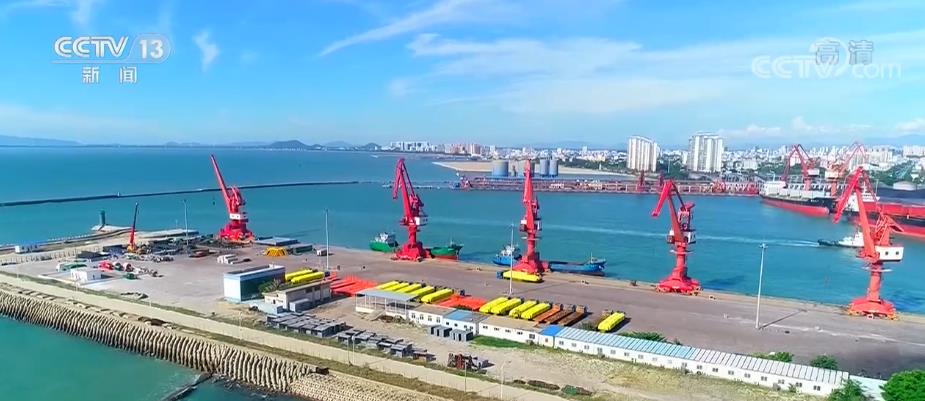
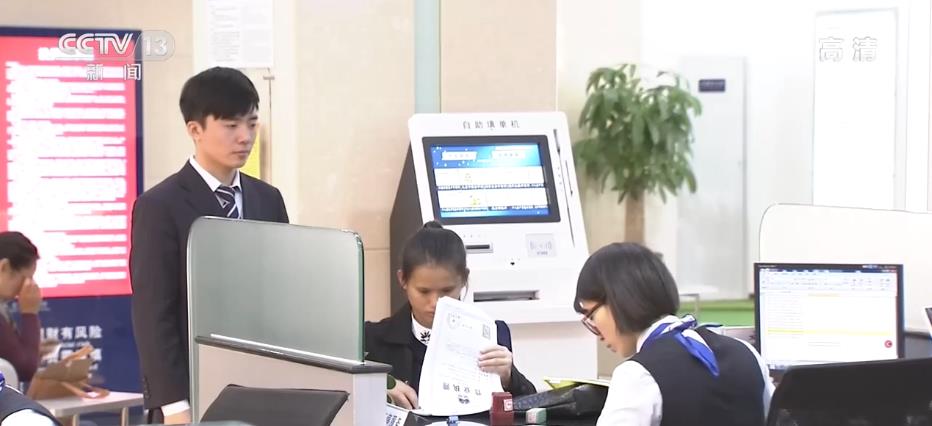
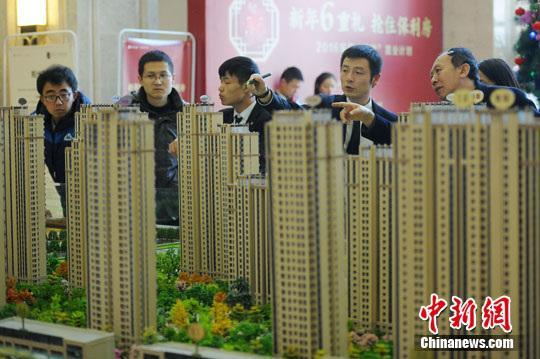
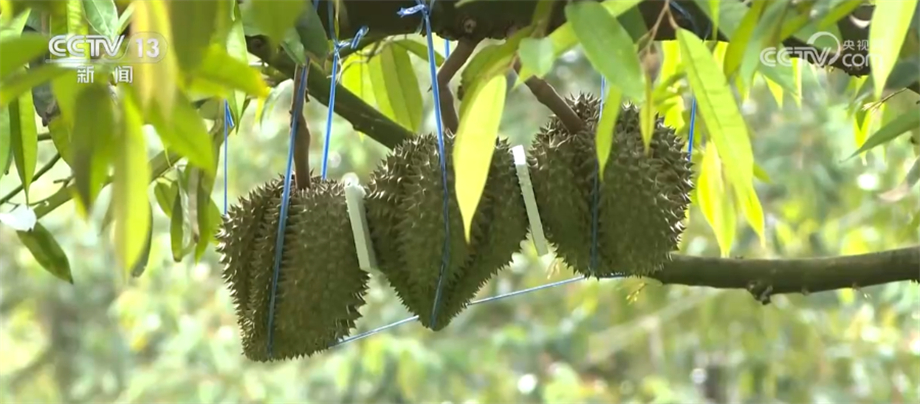
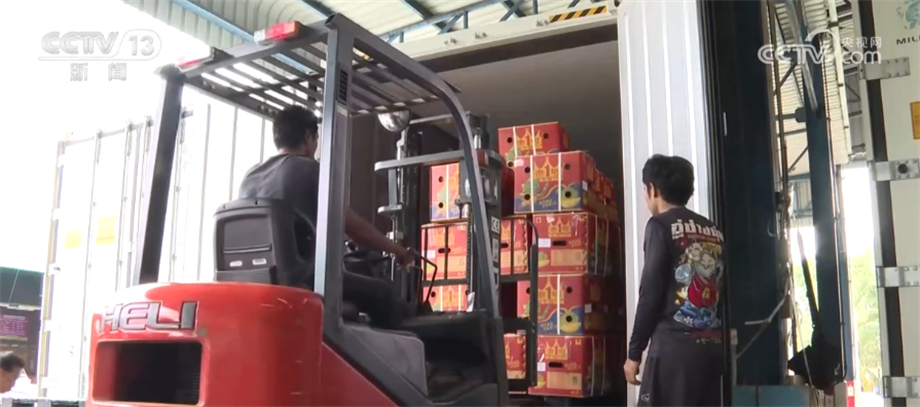
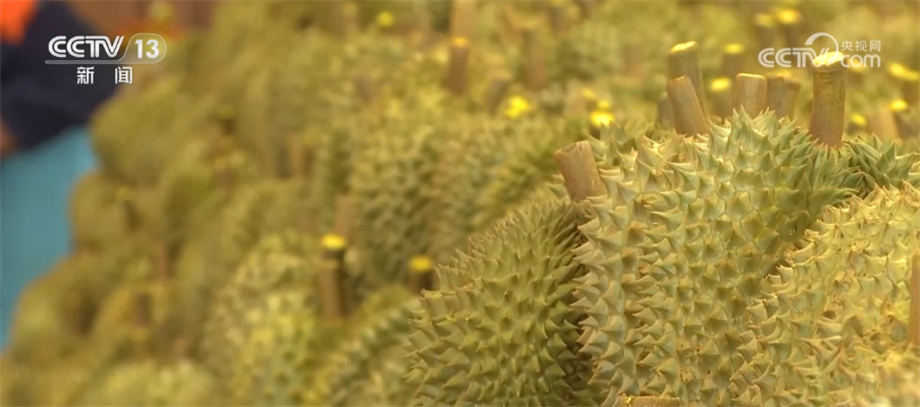
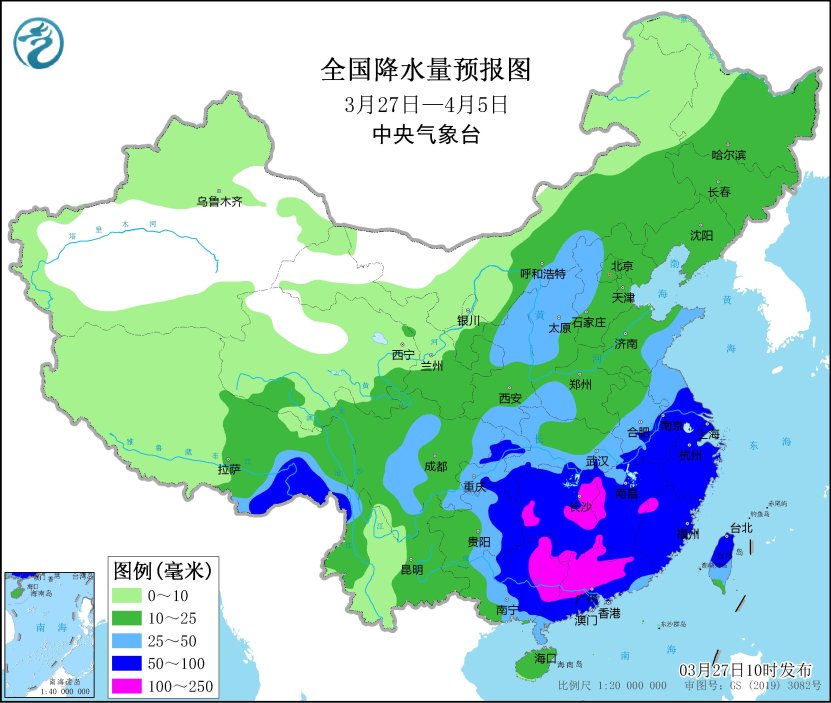
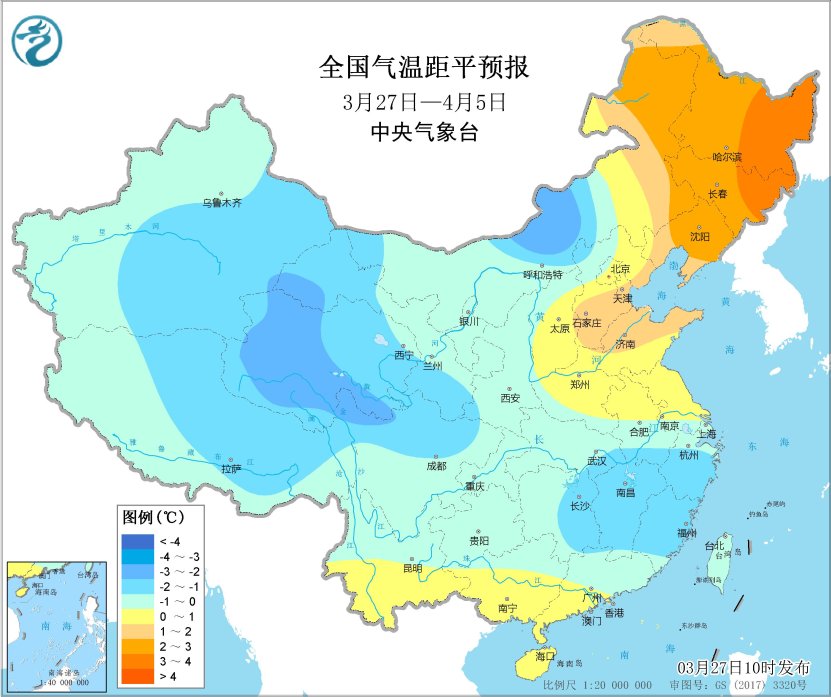

 Said, the calculation formula is:
Said, the calculation formula is:
